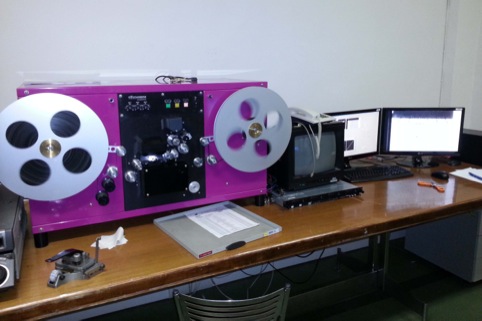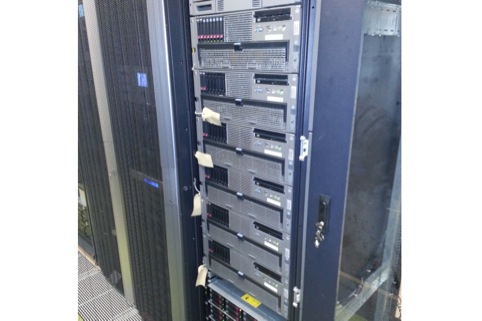
Italy’s Radiotelevisione Italiana (RAI) is about to launch the latest step in the digitisation of its massive archive of film and television material. Recorded on a variety of media since the 1950’s, and more or less equally divided between radio and television, the archive represents about a million hours of transmission. The project aims to help prevent the material’s deterioration and to make the resulting digital content available as a resource for further transmission, for public use and for eventual publication and sale off-line.
The company has run a series of tests to identify the most suitable modus operandi and technology for proceeding with the process of its archives. Giorgio Balocco, of RAI’s Teche archive directorate in Turin, along with colleagues from the broadcaster’s leading-edge Research Centre (also in Turin), is a member of the project’s technical team.
“RAI has participated for years in initiatives and activity for the conservation of audiovisual material, acquiring valuable experience in this sector,” Balocco says. “As well as the work it has carried out in recent years in-house, RAI has also played a key role in European projects such as the Presto “family” of projects by the three largest European broadcast archives: BBC, RAI and France’s INA (Institut National de l’Audiovisuel). In particular, Presto, PrestoSpace – in which we were responsible for the metadata aspects – and PrestoPrime – in which RAI’s Turin Research Centre with engineer Laurent Boch was responsible for technical coordination. RAI now has sufficient know-how, as far as hardware, software and processes are concerned, to carry out the digitisation of an ample range of media in-house and some of our systems have in fact already been operating for several years. One of those about to take off is that involving our large important film archives.”
The prototype system used to carry out preliminary study and research included DeBrie Technologies’ ‘Memory’ telecine/film-scanner, but the final systems for the actual digitisation will be purchased after a call for tenders, based on RAI’s requirements, which the team has fine-tuned in this test phase. The scanners will be chosen from a higher category of machines (such as Debrie’s Film Transfer SD & HD 16/35 or the Sondor Altra Mk3), and purchased along with the rest of the configuration following the call for tenders.
Balocco continues, “There are approximately 340,000 films to be digitised – a total of approximately 28,000 hours, the oldest of which date back to the fifties. The majority of the film content is newsreel footage and documentaries. About 90% is on 16mm film, the rest almost all 35mm. The Rome films will be digitised in the RAI’s Salario archive premises on the Eternal City’s Via Salaria, where they are currently stored. Almost all the rest of this important material is in RAI’s Milan facilities, where our sports archive is located.”
The majority of the archive footage covers a period running from the fifties through to 1985, so the content is an important part of recent Italian history. It is therefore extremely important for it to be safely preserved and archived for future consultation. The enormous stock of films in storage has been carefully examined to enable RAI to decide in what order they should be digitised.

For the preparatory work, the technicians working upstream of the actual digitisation work at film rewinding and inspection tables to check the physical condition of the material. The content is not actually viewed, just wound from one reel to another. At this stage, as well as inspecting the condition of the actual film and cleaning it if necessary, splices are checked and re-splicing work carried out where required.
If RAI’s AV technicians (those involved in the digitisation work will be from RAI’s production division) decide at this point that the film is in a particularly critical state, it is put aside for a more careful in-depth restoration process by external specialist companies.
Balocco continues, “If the films’ content has to be viewed, flat-bed editing units are used, which are similar to the rewinding and inspection tables, but have heads and lamps or LEDs that enable the film’s video and audio to be checked in detail, as well as making certain that the reels’ content is interesting and correctly edited. For this stage in the work cycle, we are currently using Prevost and Intercine machines which were carefully overhauled before being brought back into service.”
The reel of film is then mounted on the film scanner and, after the unit has been appropriately set, the process begins. The film scanner feeds out a digital HD SDI signal, which is fed to a server with an acquisition card that records the signal and creates MXF (Material Exchange Format) files. Although not involved in the actual digitisation process, the test line also featured SONY IMX VTR units, used to compare the output format.
As well as for the actual film scanners used on the project, there will also be a call for tenders among specialist suppliers for all the hardware and software involved in the IT aspects of the digitisation work, such as servers, storage, LTO-6 libraries and work stations.
Balocco concludes, “Following the tender and the purchase of all the equipment to be used on the definitive digitisation line, work should be completed in five or six years.”






